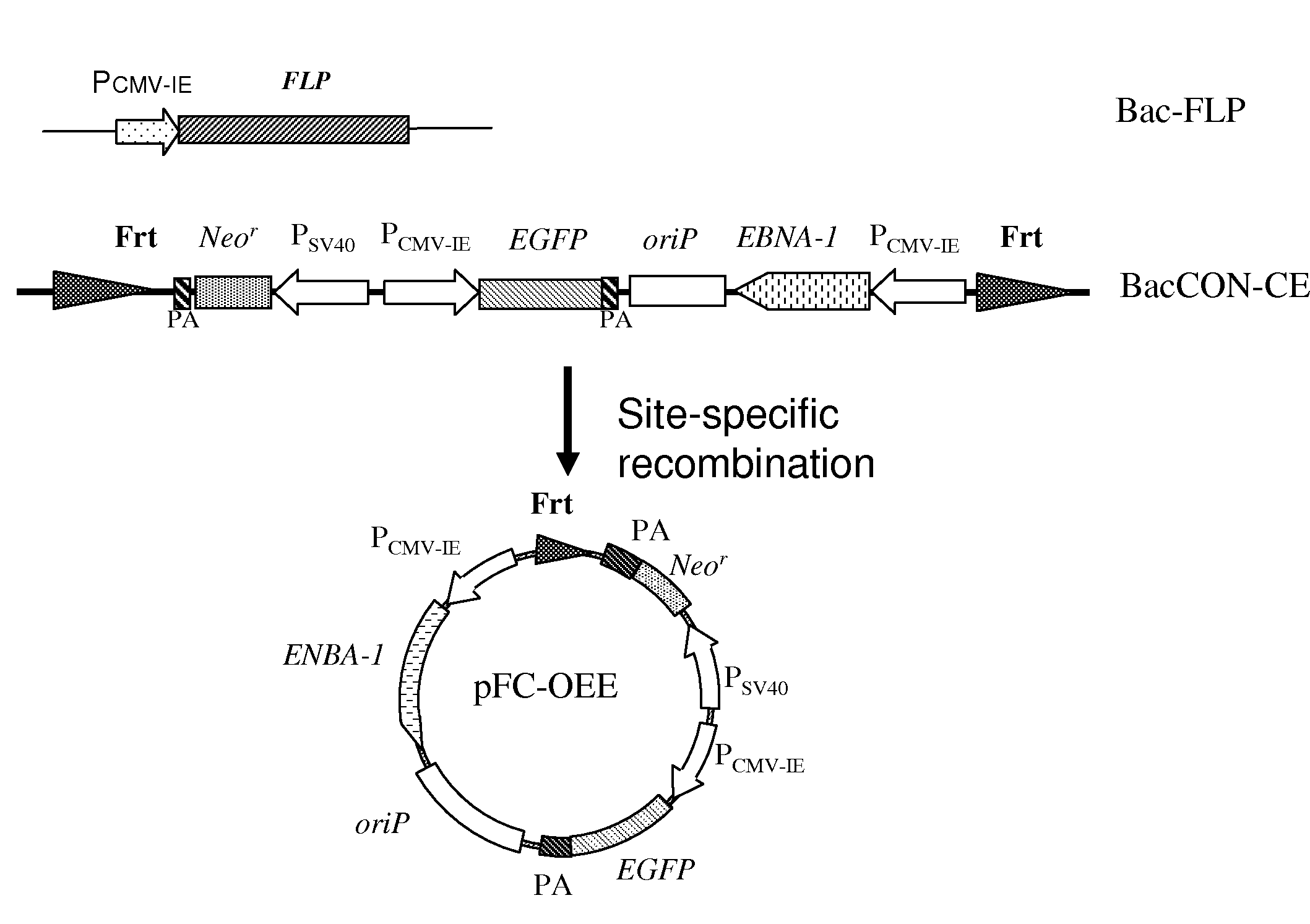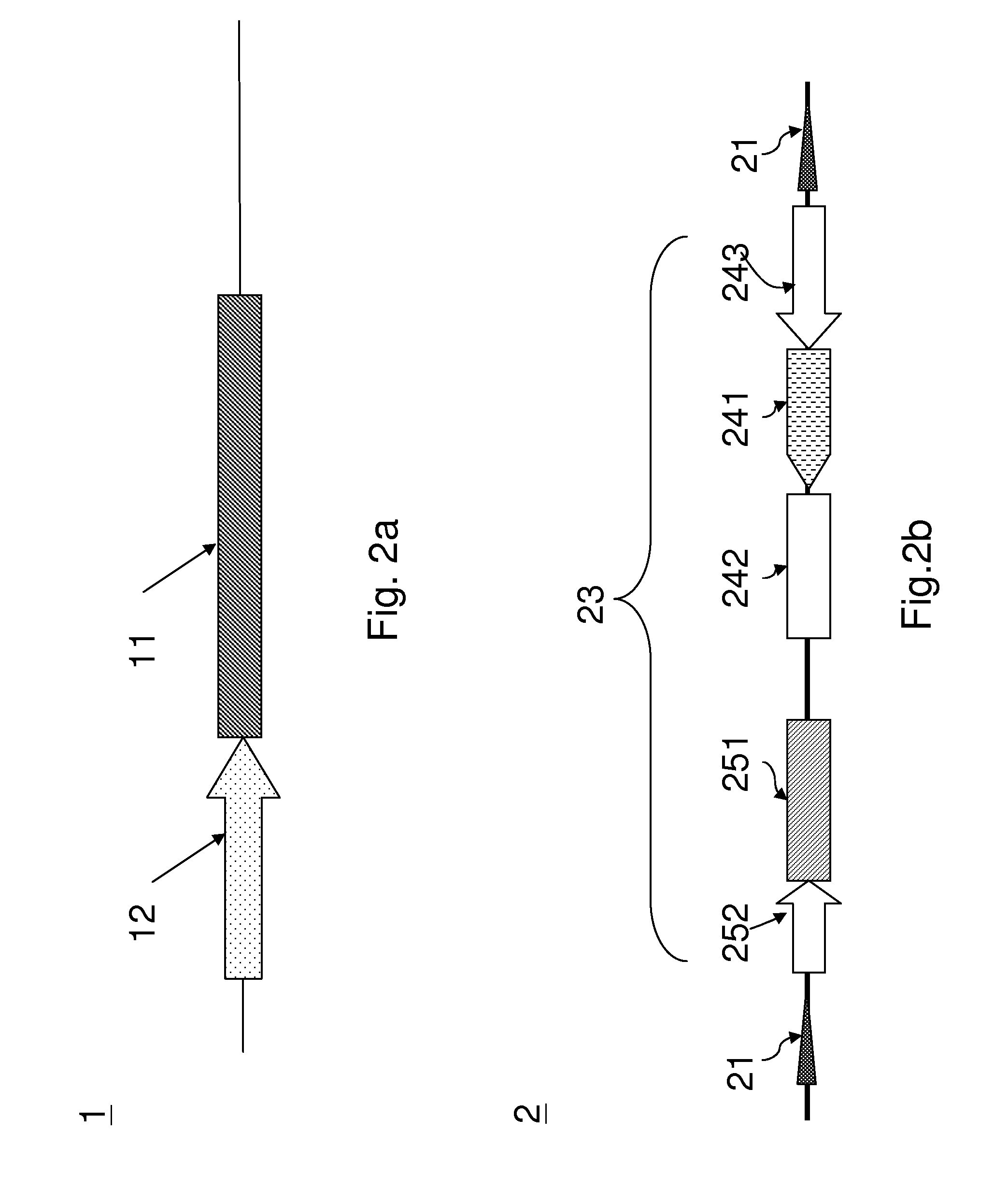Method for sustained expression of an exogenous gene
a gene and exogenous technology, applied in the field of sustained expression of exogenous genes, can solve the problems of affecting the physiology of cellular physiology, and not applicable to various cell types, and achieve the effect of preventing dysfunctional cell metabolism
- Summary
- Abstract
- Description
- Claims
- Application Information
AI Technical Summary
Benefits of technology
Problems solved by technology
Method used
Image
Examples
Embodiment Construction
[0021]Referring to FIG. 1, FIG. 2a, and FIG. 2b; FIG. 1 is a flow chart schematically illustrating a preferred embodiment of the present invention; FIG. 2a and FIG. 2b are diagrams schematically illustrating a first recombinant baculovirus 1 and a second recombinant baculovirus 2 according to a preferred embodiment of the present invention.
[0022]At step S11, a first recombinant baculovirus 1 is provided, wherein the first recombinant baculovirus 1 includes a recombinase gene 11 and a first promoter 12 positioned upstream the recombinant gene 11.
[0023]At step S12, a second recombinant baculovirus 2 is provided, wherein the second recombinant baculovirus 2 includes two recombinase recognition sites 21 and an exogenous gene cassette 23 flanked by the recombinase recognition sites 21. The exogenous gene 23 includes a nuclear antigen gene 241, an origin of replication sequence 242, and a second promoter 243. A nuclear antigen is expressed by the nuclear antigen 241 and binds to the origi...
PUM
| Property | Measurement | Unit |
|---|---|---|
| expression time | aaaaa | aaaaa |
| green fluorescence | aaaaa | aaaaa |
| stability | aaaaa | aaaaa |
Abstract
Description
Claims
Application Information
 Login to View More
Login to View More - R&D
- Intellectual Property
- Life Sciences
- Materials
- Tech Scout
- Unparalleled Data Quality
- Higher Quality Content
- 60% Fewer Hallucinations
Browse by: Latest US Patents, China's latest patents, Technical Efficacy Thesaurus, Application Domain, Technology Topic, Popular Technical Reports.
© 2025 PatSnap. All rights reserved.Legal|Privacy policy|Modern Slavery Act Transparency Statement|Sitemap|About US| Contact US: help@patsnap.com



